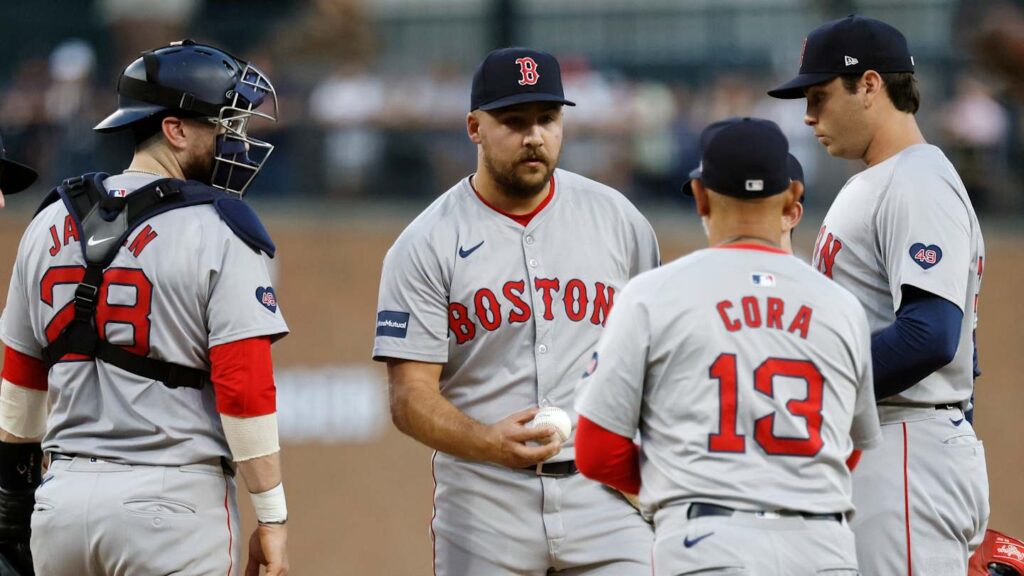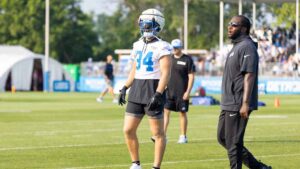
Daylight update: Down the drain! “Boston Red Sox’s Playoff Aspirations Crumble as Offensive Inconsistencies, Bullpen Failures, and Key Injuries Lead to Late-Season Collapse and Third Straight Postseason Absence”…
The2024 Boston Red Sox entered the season with optimism and a renewed sense of purpose, aiming to build on a promising roster mix of veterans and young talent.
Yet as the season progressed, cracks began to form, and the team’s late-season collapse became emblematic of a campaign marked by offensive inconsistencies, pitching struggles, and untimely injuries. Ultimately, these factors led to a disappointing end to their playoff aspirations.
Early Season Promise
The Red Sox began the season strong, fueled by a dynamic lineup and a pitching staff that appeared to have turned a corner. At the All-Star break, Boston was 11 games over .
500 and in a strong position within a competitive American League playoff race. The rotation’s 3.63 ERA was among the league’s best, while a deep bullpen provided stability.
Offensively, key players such as Rafael Devers and Masataka Yoshida led the charge, and emerging contributors gave fans hope for sustained success.
Manager Alex Cora’s leadership appeared to be paying dividends, with the team consistently finding ways to win close games. The Red Sox’s ability to compete against top-tier opponents highlighted their potential as legitimate postseason contenders. However, this optimism masked underlying issues that would later surface in devastating fashion.
Mid-Season Decline
The first signs of trouble emerged shortly after the All-Star break. The pitching staff, which had been a strength early on, began to falter. Injuries to key relievers Justin Slaten and Chris Martin significantly weakened the bullpen.
Trade deadline acquisitions Luis García and Lucas Sims were intended to shore up the relief corps, but both succumbed to injuries by late August, leaving the team scrambling for answers.
The rotation, too, struggled to maintain its early-season form. Veteran starters like James Paxton and Tanner Houck were inconsistent, while younger arms failed to provide the needed support. As the team’s ERA ballooned to 5.15 in the second half—second-worst in Major League Baseball—Boston’s pitching staff became a liability rather than an asset.
Offensive Struggles
While pitching struggles dominated the narrative, the Red Sox’s offense was equally culpable in the team’s downfall. Early in the second half, the lineup began to falter, showing alarming inconsistency.
The team’s inability to string together hits or capitalize with runners in scoring position became a recurring theme. A telling moment came during a series against the Tampa Bay Rays, where Boston posted its lowest on-base percentage in a three-game set since 1909.
Strikeouts plagued the Red Sox in crucial moments. In one particularly demoralizing game against the Minnesota Twins, they tied a franchise record with 20 strikeouts in a 12-inning affair.
The struggles weren’t limited to any single player—collectively, the lineup’s slumps proved too much to overcome. Even stars like Devers and Yoshida experienced downturns, while complementary players failed to step up when needed most.
Managerial and Organizational Challenges
Manager Alex Cora, a steady presence throughout the season, expressed frustration as the Red Sox’s playoff hopes slipped away. After a particularly disheartening loss in September, he bluntly stated, “We blew it.”
Cora’s midseason contract extension signaled the organization’s faith in his leadership, but the results failed to match expectations. Despite his efforts to motivate the team and manage through adversity, the Red Sox were unable to reverse their downward trajectory.
Following the season, significant changes were announced within the organization. Chief Baseball Officer Craig Breslow dismissed six members of the coaching staff, including first base coach Andy Fox and bullpen coach Kevin Walker.
These moves reflected a broader effort to address systemic issues and chart a new course for the franchise. Breslow emphasized the need for accountability and promised a thorough evaluation of both the roster and coaching personnel.
Fan Disappointment
For Red Sox fans, the late-season collapse was a bitter pill to swallow. After missing the playoffs for the third consecutive year, frustration among the fanbase reached a boiling point.
Critics pointed to the team’s failure to address long-standing issues, particularly in the bullpen, as a key reason for their continued struggles. Others questioned whether the front office had done enough at the trade deadline to bolster the roster.
Attendance at Fenway Park remained strong throughout the season, a testament to the loyalty of Boston’s fanbase. However, the lack of postseason baseball for another year tested the patience of even the most die-hard supporters.
Calls for more aggressive offseason moves grew louder, with fans demanding a roster capable of contending in the ultra-competitive American League East.
Looking Ahead
As the Red Sox turn their attention to the offseason, several key priorities emerge. Addressing the bullpen’s vulnerabilities is paramount, as is improving the consistency of the starting rotation.
The offense, while potent at its best, requires greater depth and reliability. Organizationally, the coaching staff overhaul is a step in the right direction, but further changes may be necessary to foster a culture of sustained success.
Boston’s front office faces a crucial winter. With a mix of established stars and promising young players, the foundation for a competitive team exists.
However, bridging the gap between potential and performance will require bold decision-making and strategic investments. The Red Sox cannot afford another season of unmet expectations.
The 2024 season was a tale of two halves for the Boston Red Sox. What began as a promising campaign ended in disappointment, as offensive struggles, pitching woes, and untimely injuries culminated in a late-season collapse. For a franchise with a storied history and passionate fanbase, missing the playoffs for a third consecutive year is unacceptable.
The challenges are clear, but so too is the path forward. With a commitment to addressing their weaknesses and building on their strengths, the Red Sox can reestablish themselves as contenders.
The 2024 season may be remembered as a missed opportunity, but it also serves as a wake-up call—one that the organization must heed to return to its rightful place among baseball’s elite.






